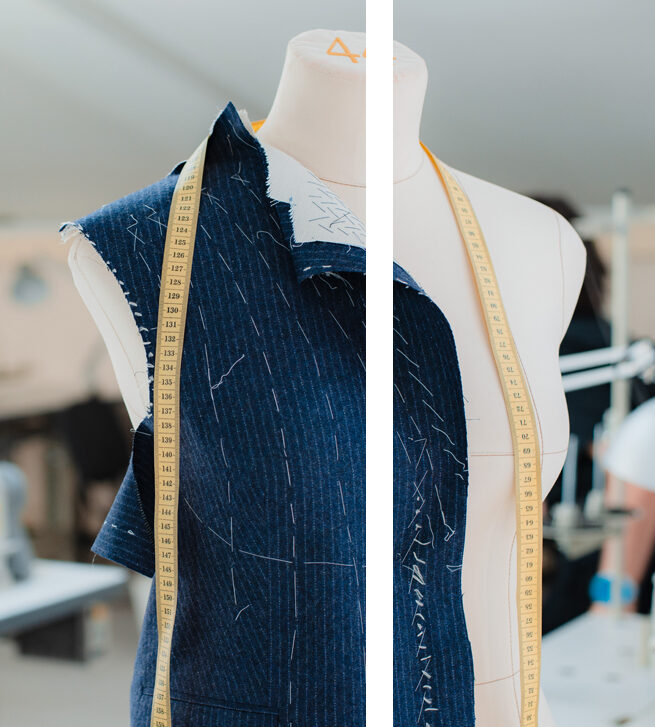Expert Tailor Perth: Crafting Custom Suits for each Event
Expert Tailor Perth: Crafting Custom Suits for each Event
Blog Article
Recognizing the Tailoring Refine: From Textile Option to Last Fitting for the Suitable Wardrobe
The tailoring procedure is an intricate interaction of art and scientific research, beginning with the crucial choice of material selection and finishing in the accurate changes of last fittings. Each textile type brings unique top qualities that affect not only the visual allure however likewise the garment's long life and viability for numerous celebrations.
Importance of Material Option
Choosing the ideal textile is vital in the tailoring process, as it straight affects the comfort, resilience, and total visual of the final garment (tailor perth). The choice of textile sets the structure for the garment's efficiency, performance, and design. Various textiles possess distinct buildings, such as breathability, weight, and stretch, which can considerably affect just how the garment drapes and fits the body
In addition, material option affects the garment's longevity and convenience of treatment. High-grade textiles can withstand damage, keeping their appearance and structure in time, while lower-quality products might result in pilling or fading. Furthermore, the ideal fabric adds to the garment's capacity to transition throughout seasons and occasions, thereby enhancing versatility.
A customized item made from an ideal textile not just showcases craftsmanship however also elevates the user's self-confidence. Subsequently, recognizing the nuances of material option is paramount for any type of customizing endeavor. It makes sure that the final item not just meets the visual needs of the customer but also lines up with functional demands, thus attaining an unified equilibrium in between form and feature in the tailored wardrobe.
Kinds Of Fabrics and Their Usages
Comprehending the numerous types of textiles offered is vital for making notified decisions throughout the tailoring procedure. Each material has special attributes that determine its suitability for details garments and events.
Cotton, recognized for its breathability and gentleness, is optimal for sportswear and summer garments. Its adaptability allows it to be customized into every little thing from t-shirts to outfits. Wool, on the various other hand, is favored for its warmth and framework, making it an outstanding selection for formal fits and outerwear - tailor perth. Its natural flexibility helps garments preserve form in time.
Silk emanates deluxe and is lightweight, making it excellent for eveningwear and delicate shirts; however, it calls for careful handling due to its delicacy. Bed linen, with its distinctive finish, is a preferred choice for warm environments, supplying a ventilated and crisp feeling, but it wrinkles conveniently, which may affect the garment's appearance.
Synthetic materials, such as polyester and nylon, deal longevity and resistance to wrinkles, making them appropriate for day-to-day wear and energetic clothing. Comprehending these textile types and their residential or commercial properties enables far better decision-making, ensuring that each tailored piece not just fits well however also straightens with the desired objective and celebration.
The Tailoring Methods Clarified
The art of customizing depends on a variety of techniques that transform fabric into well-fitted garments. Central to this procedure is pattern composing, where a tailor creates templates based upon the customer's measurements and desired design. This first step ensures that the garment will certainly fit the user appropriately prior to any kind of cutting occurs.
As soon as patterns try these out are developed, cutting techniques come into play. Accuracy is vital as mistakes can result in misfitting garments. Tailors often utilize numerous cutting approaches, such as single-layer reducing for elaborate designs and multiple-layer reducing for effectiveness on basic patterns.
Basting is another necessary technique, permitting dressmakers to temporarily sew material assemble for an initial installation. This method supplies the chance to analyze the drape and general silhouette before last stitching.
Seaming methods, including flat-felled joints and French seams, improve the garment's toughness and visual charm. Tailors likewise utilize methods such as interfacing and extra padding to provide structure and form to details locations, like shoulders and collars.
Lastly, finishing methods, including hemming and side completing, make certain the garment's longevity while giving a refined appearance. With each other, these techniques create the foundation of effective customizing, causing exquisite, custom-fit clothing.
Fitting Modifications and Factors To Consider

Secret factors to consider include the shoulder fit, which needs to neither droop nor restrict movement, and the sleeve size, which need to permit for comfy arm movement while maintaining a polished look. Additionally, modifications at the waistline can refine the shape, with alternatives to let out or take in fabric as needed.
The surge of pants is one more vital element; it needs to rest comfortably over the hips without triggering discomfort, enabling convenience of activity. Hemming lengths for both trousers and skirts must show the user's preferred style while valuing percentages.

Keeping Your Tailored Attire
Correct upkeep of customized garments is important to preserving their fit and look in time. To make certain longevity, regular cleansing is vital. Constantly adhere to the treatment tag instructions, which may suggest dry cleaning for delicate materials or device washing for more long lasting products. Prevent constant laundering, as this can put on down the textile and alter the garment's shape.
Storage is equally essential; use padded hangers for jackets and coats to keep shoulder framework, and store trousers folded up nicely or hung to stop creasing. Protect garments from straight sunshine, which can fade shades and damages fibers.
Furthermore, read here periodic evaluations for minor repairs can prevent bigger problems. Inspect for loose buttons, tearing seams, or signs of moth damages, dealing with these problems promptly to keep the garment's stability.
Lastly, take into consideration seasonal rotation. Wearing customized pieces in small amounts allows textiles to recuperate, prolonging their lifespan. By applying these maintenance approaches, you can make sure that your customized garments stay as beautiful as the day you first used them, enhancing your ideal closet for many years to come.
Conclusion
The customizing process, incorporating material selection, skilled strategies, and accurate suitable adjustments, plays a critical function in developing garments that improve both convenience and design. Each stage adds to the total effectiveness of the end product, guaranteeing that clothing not just fits well but additionally reflects specific identity. Recognizing the significance of upkeep extends the life of tailored garments, strengthening their worth in a well-curated closet. An extensive strategy to tailoring culminates in a refined and certain appearance.
Picking the right fabric is essential in the tailoring process, as it directly affects the convenience, sturdiness, and general aesthetic address of the final garment. The option of fabric sets the foundation for the garment's capability, design, and efficiency. Different fabrics possess special residential properties, such as weight, stretch, and breathability, which can significantly influence exactly how the garment drapes and fits the body.
The art of tailoring counts on a range of techniques that transform textile into well-fitted garments.The customizing procedure, including material selection, knowledgeable methods, and precise suitable adjustments, plays an essential function in creating garments that boost both comfort and design.
Report this page